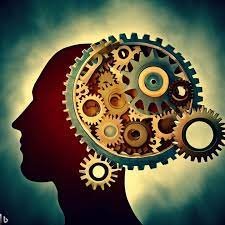
Non-thought today
Heidegger’s text on Serenity, written in 1949 at a ceremony commemorating the centenary of Conradin Kreutzer’s death, in his hometown Meßkirch, which, as it was also Martin Heidegger’s hometown, was called to speak at the event, book This is part of your speech.
a ceremony commemorating the centenary of Conradin Kreutzer’s death, in his hometown Meßkirch, which, as it was also Martin Heidegger’s hometown, was called to speak at the event, book This is part of your speech.
The text of serenity reveals how much we are induced to a calculated thought that runs from opportunity to opportunity, it is fundamental to understand that what is attributed to the digital world, was already happening long before this, and is not restricted to the digital universe: “ this thought continues to be a calculation, even if it does not operate with numbers, nor does it use a calculating machine, nor devices for large calculations” (pg. 13), even long before the digital universe, he talks about it and says that it is not the one you’re talking about.
The dynamic that many attribute to the digital universe was already very present in modern man: “thought that calculates (rechnend Denken) never stops, never comes to meditate. The thought that calculates is not a thought that meditates (ein besinnliches Denken), it is not a thought that reflects (nachdenkt), it is not the meaning that reigns in everything that exists” (idem, pg. 13), that is, of the late 1940s and before modern computers.
It is worth translating the German words: ein besinnliches Denken (a contemplative thought) and nachdenkt (to think about) and das rechnend Denken (calculative thought).
Thus, for the philosopher there are two forms of thought: that which calculates and that which meditates, and it can be thought that the second does not perceive reality, “contributes nothing to carrying out praxis” (pg. 14), can lead to pure reflection, persistent meditation being “too “high” for common understanding” (idem).
The author says that the only correct thing is that the truth of a thought that meditates appears as little spontaneously as the thought that calculates, both require efforts.
The fact that contemporary man is linked to a way of thinking is because this is the current way in which thought was elaborated and trained, linked to rational and ideal logos.
However, he considers that each person can follow the paths of reflection within their limits and in their own way: “We do not, therefore, in any way need to elevate ourselves to the “higher regions” when we reflect. We just need to linger (verweilen) close to what is close and meditate on what is closest: what concerns each one of us, here and now; here, in this piece of homeland; now, in the present universal hour” (pg. 14).
Of course, Heidegger reflected on the celebration in his hometown, but this applies to all the events we experience in our lives.
Heidegger, M. (no date) Serenidade (Serenity). Transl. de Maria Madalena Andrade e Olga Santos. Lisboa: Instituto Piaget, s/d.









